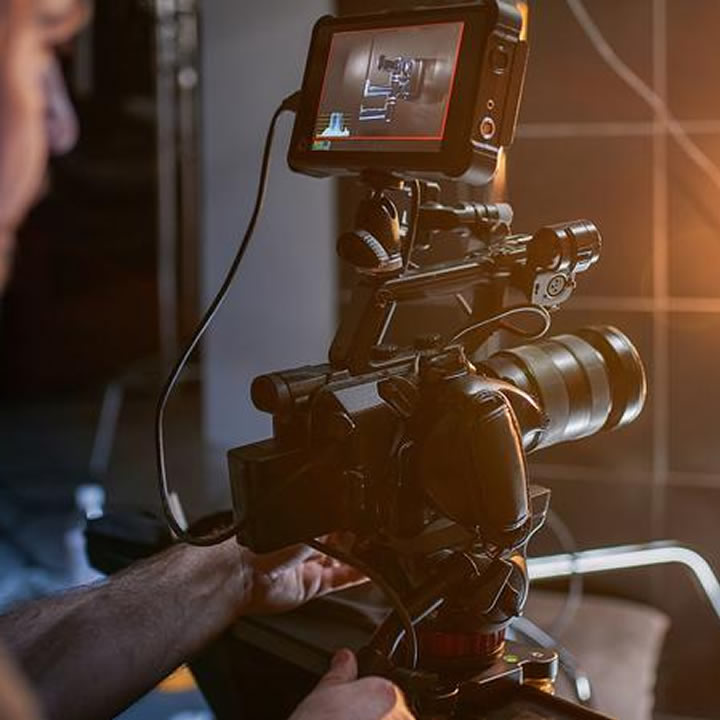The world we live in has been dominated by different forms of technology over time. It went from the wheel to the steam engine and in 2022, we are planning our journey to Mars. Every aspect of modern society has seen adverse changes across the board.
The film industry has also seen a significant change over the decades. As technology became more compact, and efficient, and data became easier to manage, the film industry saw significant evolution. Gone are the days of sequential photography and silent movies.
When modern technology and the film industry joined hands, we saw some incredible results.
Tech in the Film Industry
This begs the question; which technology is influencing the film industry in 2022?
3D Printing
3D printing is a testament to the fact that innovation in one industry can be used in others. When we speak of 3D printing, it has been used in manufacturing for a long time. Everything from toys, organ tissue, and even homes is 3D printed.
In movies, you need all forms of props, costumes, and other bits and bobs which make up a scene. Using 3D printing, you could quite literally print anything you want. You simply need to input the design into the printer and watch it do the job.
It could be as obscure, unconventional, and flamboyant as possible and a 3D printer would make it. 3D printers have evolved over time to produce incredibly detailed objects which would have otherwise required a lot of manual craftsmanship
3D Visualization
Consider this the opposite of 3D printing.
Instead of printing an object from a digital file, 3D visualization takes real-life characters and sets and creates digital replicas of them. This allows film studios to take real-world people or locations and combine them with digital overlays or characters.
Imagine dragons flying down Rodeo Drive or aliens fighting in Grand Central Park. The greatest benefit of 3D visualization is how much time and money it can save for a studio. Manually altering a location for an entire scene takes a lot of time and effort.
It also costs a lot of money and accuracy can be lackluster. However, a 3D visualization allows for entire environments to be replicated almost identically with the digital additions fitting in seamlessly.
In the beginning, 3D visualization used to be extremely expensive but as time has passed and its popularity has risen, costs have gone down. With more and more films using 3D visualization, the demand is higher than ever which pushes for more innovation in this space.
Algorithmic Editing
In 2022, algorithms exist all around us. In filmmaking, algorithmic film editing has gained traction thanks to the incredible convenience that it offers. Using algorithmic editing, film studios can preprogram software or create new software that would do the job on its own.
Since there is no limit to how customized software can be, the ceiling for algorithmic editing is non-existent.
Algorithmic editing, the software can be programmed to automatically alter footage in a certain way. It can be used to alter film dialogue and scenes on its own without an editor having to do it on his own.
As promising as this is, there is still some time before the machines take over entirely.
Volume Technology
In an effort to blur the lines between real life and CGI, volume technology is being used. Large LED walls project pre-recorded scenes or images in the background with the live-action parts of the movie being produced in the foreground.
By doing this, you create a seamless scene where both digital and physical aspects of the scene are merged into one. This is one of the newer entrants in this list and still costs a lot to produce so you can only expect to see it on the biggest productions.
Rendering in Real-Time
Computer chips are incredibly powerful in 2022. This has made the process of rendering a scene or project incredibly quick. Rendering is defined as combining all aspects of a scene i.e. video, audio, and digital additions, and creating a final file to publish.
Modern computer chip architecture and incredibly capable computer systems have made it possible to render as you go. When you are working on a file, it is rendering at the same time. This saves countless hours that would be spent waiting for it to be rendered in post-production.
Moreover, real-time rendering allows all collaborators to see what the final result will look like, in real time. Instead of waiting for the file to render and then finding an issue you can simply find it a lot sooner.

When it comes to uploading this footage, you need a stable internet connection to make it work. AT&T Internet does the job and if you want to learn more, click here for more information.
Conclusion
As technology becomes more advanced, the film industry will continue to leverage the different advancements that it has to offer. This will allow filmmakers to push the limits in terms of what type of content can be produced. Film fans globally can rejoice!
But if you are someone who streams and binge-watch shows or movies then you need a strong internet connection. For that, we suggest you go for Mediacom Bundle Deals and get an affordable and featured-rich internet connection.
Author Bio
Macy Davis is an enthusiastic content writer with over a decade of experience. She has authored several articles for a diverse range of industries.
She also sees herself as an explorer who wants to document every discovery made on her exciting journey. What makes her stand out is her belief that conveying her interpretation in the most thorough manner possible will strengthen her relationship with her readers.

